
Android Auto cars, compatibility and design
Update: General Motors (Buick, Cadillac, Chevrolet and GMC) released a software update to add Android Auto support in most 2016 model year vehicles. The free update requires a visit to the dealership, at no charge to the owner.
Google Maps is the unquestionable king of navigation for the last decade, yet it’s never had a central role in cars. Garmin, TomTom and Navteq occupied that co-pilot seat.
Android Auto gives Google smartphone users their first chance to unsuction those clumsy GPS units from the windshield and skip car maker’s clunky navigation systems.
Yes, in-dash Google Maps’ is here, and it goes beyond navigation. Apps for making calls, playing music and sending messages are part of this digital journey.
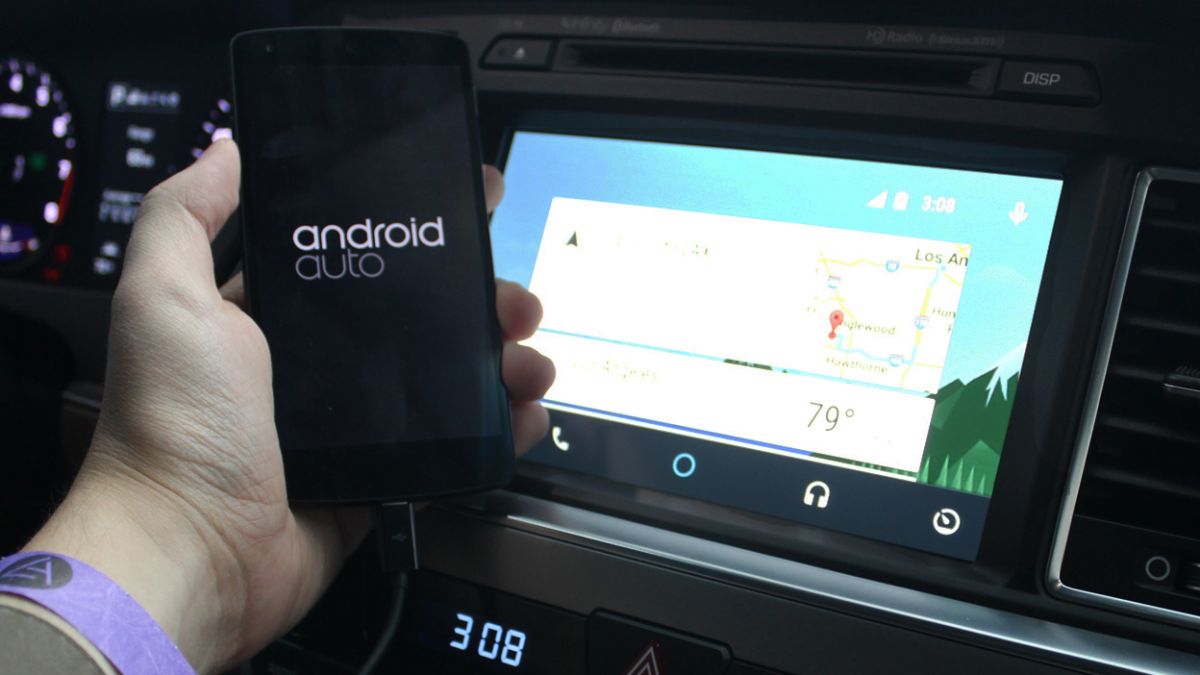
All of the basics are here, and they’re all conveniently out of reach. Android Auto gives you safe access to everything that’s important on your phone and nothing more.
Here’s what we found in our experience with Android Auto over the last year, which provides a better-looking experience than Apple CarPlay.
What is Android Auto?
Android Auto casts a Google Now interface onto your car’s infotainment display via USB. It’s not the same as mirroring your phone onto the car display using HDMI, as the vehicle’s touch screen, steering wheel controls, buttons and control knobs remain functional when using Android Auto.
There’s still limitations on app support though. Only Google approved apps with necessary driver-safety measures in place can take advantage of the Android Auto user interface.
Audio is sent via USB for music with no loss in sound quality, unlike with Bluetooth audio streaming. Phone calls are handled via Bluetooth hands-free.
Which cars support Android Auto?
How does one get Google Maps in the car? Right now, you can buy brand new cars with the necessary technology in place to take advantage of Android Auto. Some existing cars may be updated down the road.
A total of 40 automakers are selling new cars in Australia, Canada, France, Germany, Ireland, Italy, Mexico, New Zealand, Spain, the UK and the US with Android Auto support.

Cadillac and Chevy announced that all of their new models will come standard with Android Auto while Audi, Honda, Kia, Hyundai and others are rolling out support with each new vehicle introduction or mid-cycle refresh.
Chrysler pledged support for Android Auto with its next-generation Uconnect infotainment system, but hasn’t confirmed which vehicles will have it. Ford promised all 2017 model year cars with SYNC 3 will gain support for Android Auto. Existing 2016 models with SYNC 3 will get a software update later this year for the feature.
Volkswagen supports Android Auto on most of its current lineup, with the exception of the Touareg and Eos, two of the oldest models in its lineup.
Android Auto aftermarket solutions
Android Auto is a perk if you’re already buying a car, but what if you’re not in the market for new wheels or just started making monthly payments on a long-term lease?
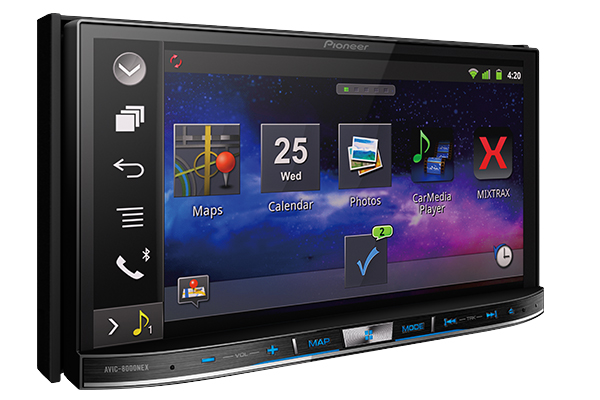
That’s where stereo manufacturers come in with Android Auto aftermarket head units. JBL, JVC, Kenwood and Pioneer plan to save the day on your dated ride.
Android Auto phone compatibility
Android Auto requires a smartphone with Android 5.0 Lollipop or newer. It’s likely an easier process than upgrading to a new car, unless your carrier is being stubborn. Then it’s way harder.
The patient wait for Android updates gives you reason to check out the latest Android phones, which come with Marshmallow and Android Auto compatibility out of the gate, like the Nexus 6P, Samsung Galaxy S7, S7 Edge and LG G5.
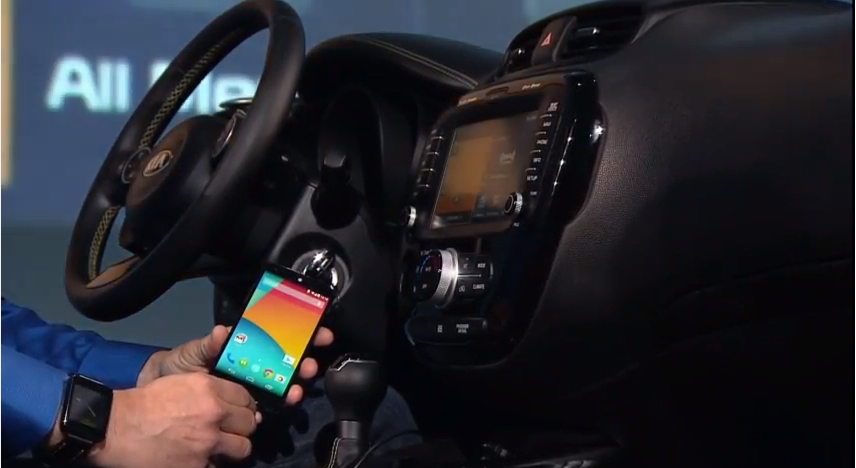
I used the older Nexus 5 to run through the Android Auto demo, so I can confirm it works just as well on older Android 5.0 Lollipop hardware too.
Beyond that, all it takes is plugging a micro USB-to-USB cable into the phone and car’s USB port. The first time the phone is connected to the car, the Android Auto app will ask if you want to enable Android Auto on the phone.
Once you click the agree button, the car-stylized interface is projected onto the in-dash screen almost instantly and the phone automatically pairs to the car via Bluetooth.
What does Android Auto look like?
Android Auto has a slick and informative interface that’s inspired by Google Now.
It has that same card-based menu that’s part of Google’s unified design language, and it’s laid out on a home screen with all of the predictions you’d expect.

Without even having to think about it, Android Auto suggests directions on where you might want to go. This is based on recent searches or your daily routine.
The weather, missed call or text alerts and in-progress music also appear within this very glance able menu – it looks a lot like the new Android Lollipop lock screen with embedded notifications.
Flanking these notifications are the always-present text and icons for the time, your phone’s battery life cellular signal strength and microphone for voice searches.
Apps, controls and Apple CarPlay comparison
Which Android Auto apps are ready?
We tested all of the official Android Auto apps provided by Google, and saw a number of other recognizable third-party programs by developers, all meant for the car.

Google Maps, Google Dialer for initiating calls and Google Music line the bottom dock of the nav system, while Google Hangouts is integrated behind the scenes to handle messaging.
The rightmost spot on the Android Auto dock is meant for third-party apps, including ones from manufacturers like Hyundai and its Blue Link Connected Car feature. Car makers still retain space within their own vehicles.
Google Maps
What if your GPS knew where you were going before you had a chance to painstakingly enter the zip code, city, street name, etc, with the utmost accuracy?
That’s the not-too-unreasonable idea behind Google Maps within Android Auto. It often throws up the place you may be going next and gives you an ETA and better route options thanks to the latest traffic information.
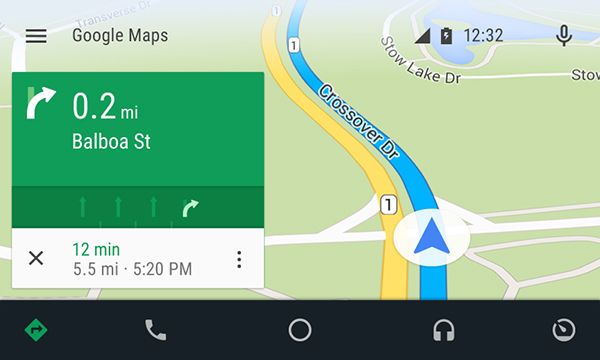
Beyond this Google Now predictive home screen, clicking into the Google Maps app brings up a familiar navigation interface, complete with dragging and pinch-to-zoom touch controls.
Deeper menu options bring up lists for suggestions and categories, and exact locations can still be typed in or spoken with voice commands. Traffic can be unchecked, but it’s on by default.
Everything else about Google Maps looks familiar, and that’s heartening. It even matches Android 5.0 Lollipop with white arrows and distance cues against the newer green background.
What’s really great is that exiting the Google Maps app mid-trip places a navigation card on the Android Auto home screen. You can keep tabs on the turn-by-turn alerts while sorting through other notifications.
Phone calls
Safely fielding calls makes Google Dialer an important app within Android Auto, second only to getting where you want to go via Google Maps.
Its menus include recent calls listed from your phone and the ability to touch “Dial a number” to reach someone outside of your frequent contacts.
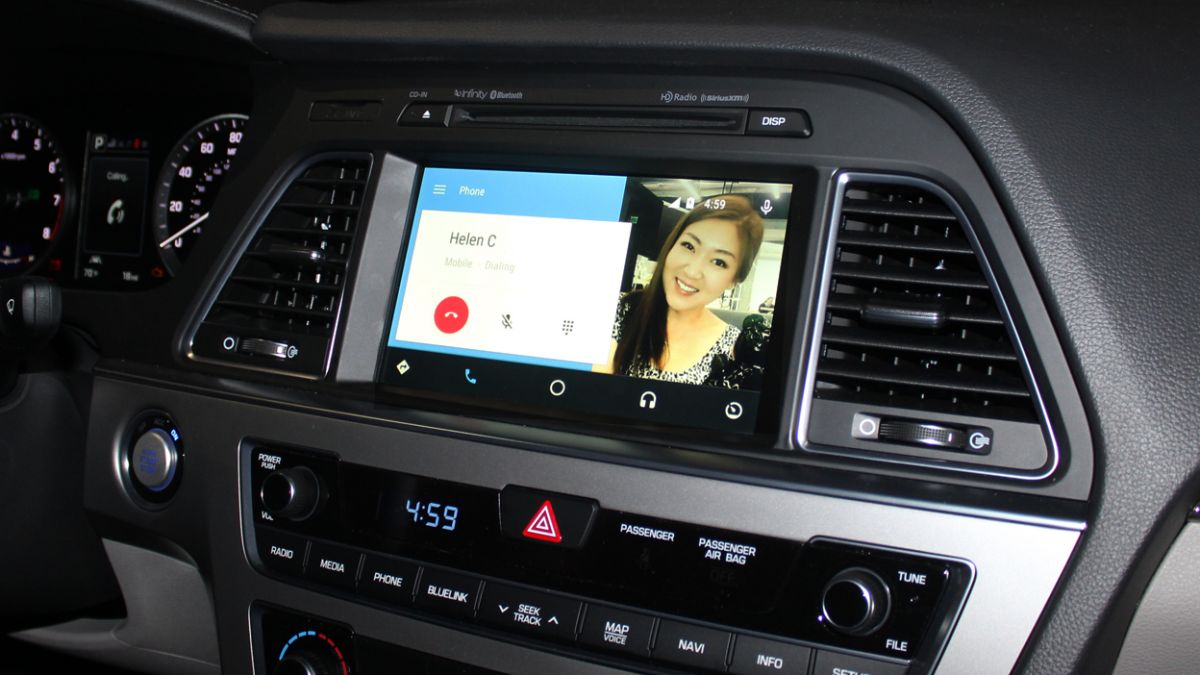
The center-aligned contact list and dial pad is fairly large, which making dialing someone up a lot easier while on the road. Microphone-initiated call functionality keeps the process even safer.
In-progress calls are themed with end and mute buttons, and there’s a hidden dialer pad for entering long extensions mid-call – just in case you have to “please listen carefully, as our menu has changed.”
The phone app’s “hamburger button” in the top left reveals more options for voice mail, speed dial and missing calls. Digging isn’t always necessary. Status bar notifications allow you to see calls, texts and other alerts as they come in, and it’s easy tap to listen to them and reply with your voice.
Messages
Hangouts doesn’t get its own dedicated app on the system tray, but Android Auto does relay SMS texts and internet messages to the in-car dash.
All of a sudden, the temptation to look over at your smartphone is a distracted driving problem of the past. It’s sitting silent and unlit when plugged into the Android Auto console.
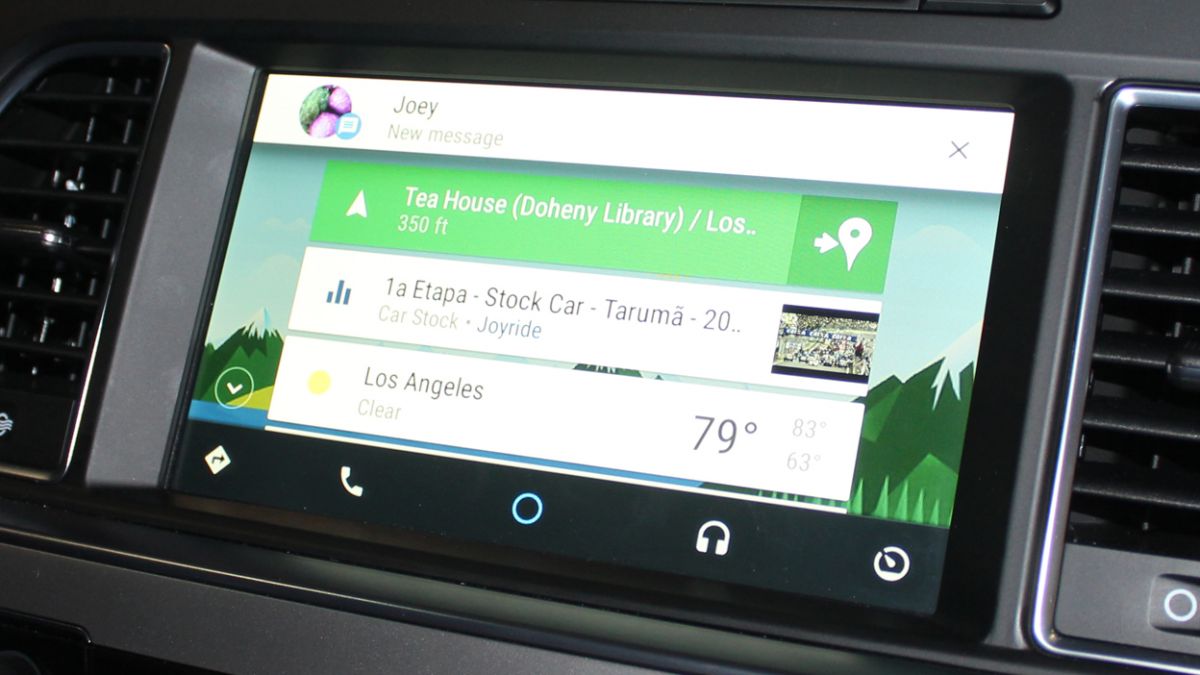
You can have the message read aloud and respond by touching the microphone icon and beginning your answer with “Reply,” followed by the rest of what you want to say.
Best of all, the more-agnostic Google enables this functionality for app sorts of messaging apps including WhatsApp, Kik, TextPlus, Text Me! and a bunch free messaging apps.
This alone won’t reverse the distracted driving epidemic, but it’s a whole lot better than having people take their eyes off the road for relatively unimportant reasons that can wait.
Music
Between listening to calls and texts read aloud, Android Auto pumps a number of music apps through your car speakers, fronted of course by Google Play Music.
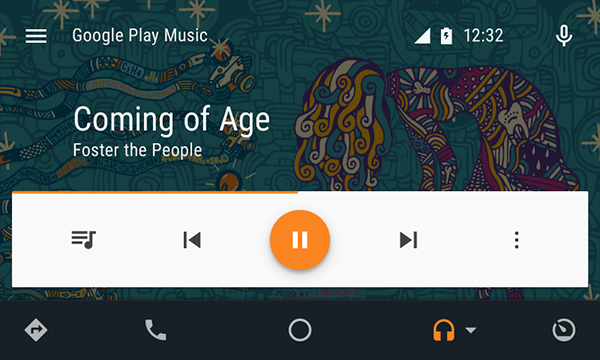
Its music controls are fairly simple with straightforward buttons and accompanying album art in the background. Streaming songs will use your data plan like normal.
What I liked most was that Android Auto’s audio player isn’t limited to Google’s flavor of a music app or even music in general.
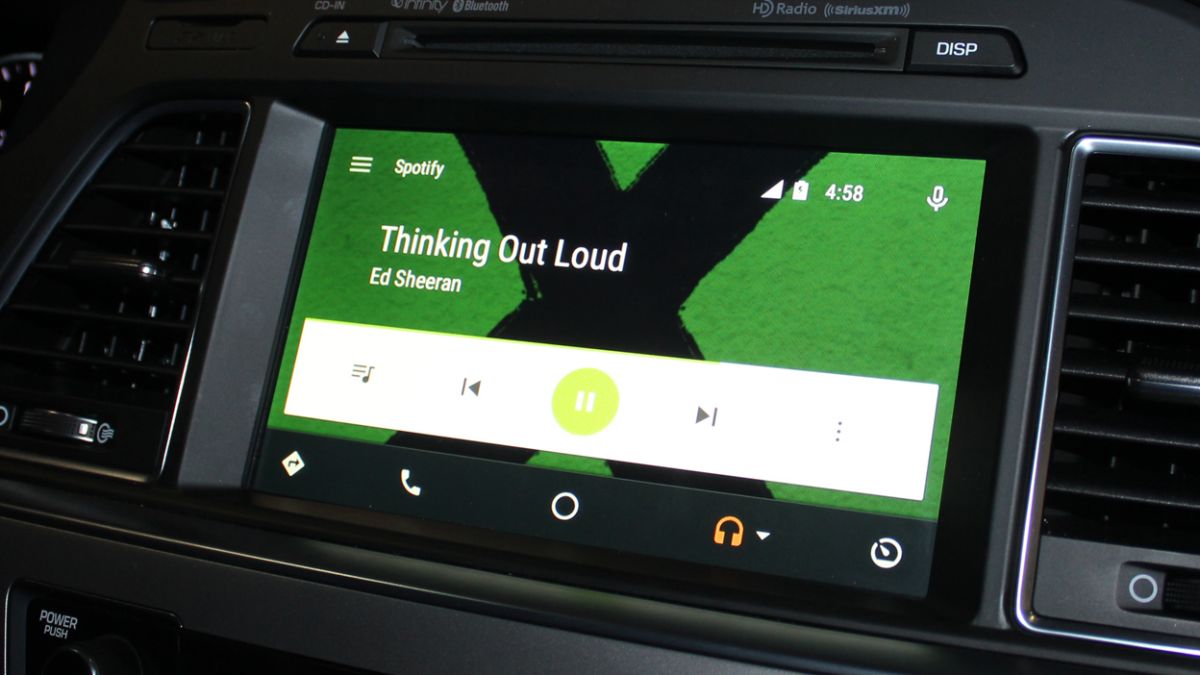
Pandora, Spotify, iHeartRadio, MLB and NPR are some of the music apps and non-music talk radio channels that you can tune into while cruising down the highway.
More apps to come
Expect more refined versions of Google’s official apps as time goes on and new third-party developers to design their existing Android apps around the Android Auto design ethos.

The voice search, for example, answers questions using Google’s knowledge graph and the in-car microphone, and it’s always expanding its database full of facts.
“Who won the 2014 World Series of baseball?” I asked the 2015 Hyundai Sonata. The car responded, “The San Francisco beats the Kansas City Royals four games to three,” almost gloating about its home team.
How do you control Android Auto?
Stow that Android phone. Google’s in-car operating system has three alternative methods to controlling your smartphone.
 Voice commands
Voice commands
Google’s voice commands are the easiest way to go about the menu system hands-free. Tap the microphone icon in the top right corner to make calls, get directions, reply to texts and listen to music. You can even Google knowledge graph questions.
Use physical buttons
The cars that we tested included steering wheel controls for prompting the voice command functionality. That’s a lot easier than reaching over for the microphone icon on the touchscreen. Standard buttons and control knobs will also work, and relevant functions, like next and previous track, automatically pass onto Android Auto.
Use the touchscreen display
Cycling through the Android Auto menu using the touchscreen is ideal for when the car isn’t in motion. Yet it’s simple enough to tap directly on what you want even when you’re in a bind. This is a simplified version of your Android phone.
Android Auto vs Apple CarPlay
Android Auto and Apple CarPlay both offer a similar experience, projecting a cleaner version of their smartphone operating systems onto a car’s head unit.
The differences are subtle, but favorable to Android owners, as long as you own a phone that belongs to Google’s popular platform.

Android Auto’s home screen is a bit smarter with Google Now, an idea Apple hasn’t been able to replicate just yet. CarPlay offers a basic app tile menu as its start screen.
The menu colors are animations are also a little brighter and bolder within Google’s car ecosystem, mimicking Android 5.0 Lollipop. It’s more refreshing than Apple’s darker theme.
Then, of course, there’s the fact that Android Auto includes the more desirable Google Maps navigation. While Apple is open to third-party apps, I doubt Google Maps is going to be one of them. It’s stuck with Apple Maps instead.
Are we there yet?
Google Maps’ is over 10 years old. It quickly unseated MapQuest as everyone’s favorite way to print out directions on the computer. Remember those days?
It continues to dominate today as an app, becoming the world’s most popular phone app even though it no longer comes pre-installed with iOS 8 devices.
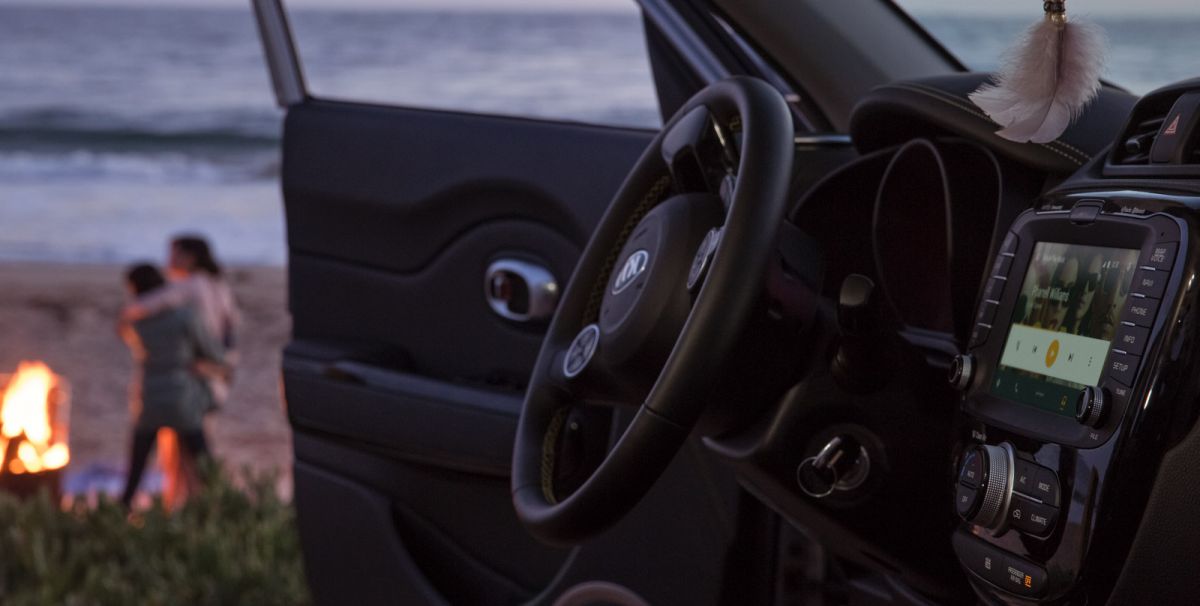
Android Auto represents the next ten years for Google Maps, with navigation where we need it most: preventing distracted drivers who pose a danger on the road.
Hands-free directions, calls, messaging and music controls are powered by Google Now and the flavor of Android Lollipop, and at least in Hyundai’s case it won’t cost extra beyond the normal price of the car’s nav system.
It’s a winning combination over using manufacturer’s vanilla nav systems. Google just needs to convince all car makers to take over their coveted center console and quit stalling out.
What cars can I buy with Android Auto?
If you’re shopping for a new car, here are the cars you can buy this year with Android Auto support from each manufacturer. Some cars need specific trim levels or option packages to receive the feature, which will be mentioned.
Audi
- 2017 Q7 (requires MMI navigation plus)
Buick
- 2016 Lacrosse (update available from dealership)
- 2016 Regal (update available from dealership)
Cadillac
- 2016 CT6 (update available from dealership)
- 2016 ATS (update available from dealership)
- 2016 ELR (update available from dealership)
- 2016 CTS (update available from dealership)
- 2016 XTS (update available from dealership)
- 2017 SRX (update available from dealership)
- 2016 Escalade (update available from dealership)
Chevrolet (requires MyLink 7-inch or 8-inch infotainment system)
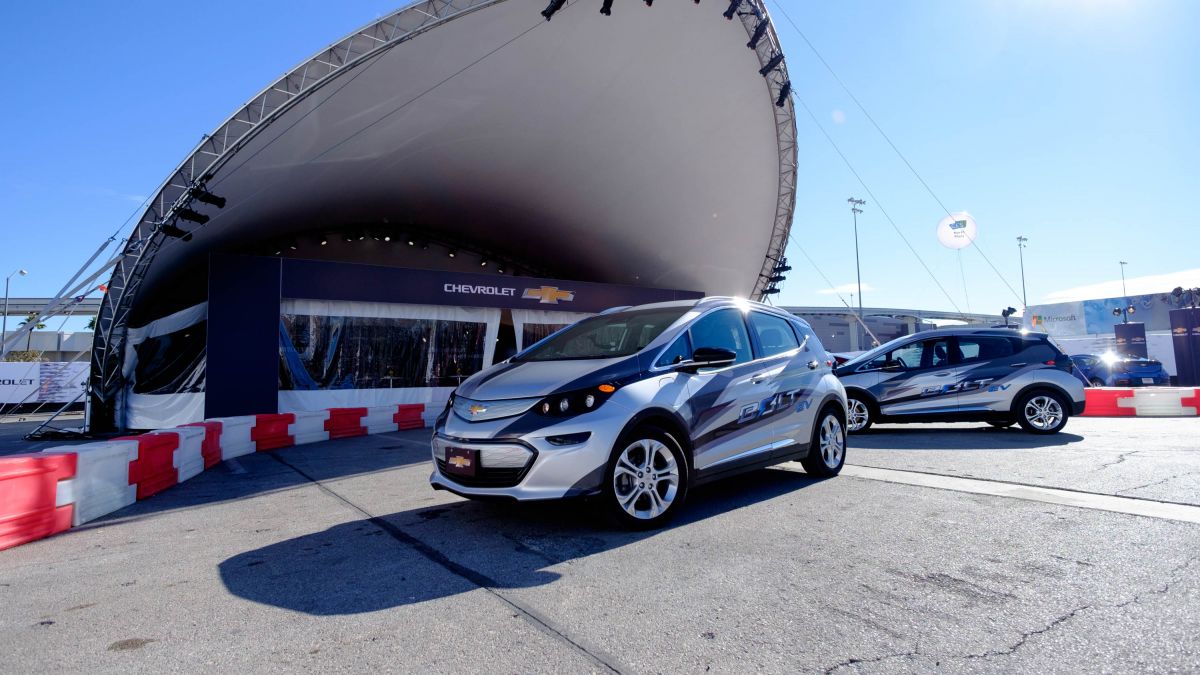
Ford (requires SYNC 3)

- 2017 Escape
- 2016 Fiesta (software update available later this year)
- 2016 Focus (software update available later this year)
- 2016 Mustang (software update available later this year)
- 2016 C-MAX (software update available later this year)
- 2016 Taurus (software update available later this year)
- 2016 Edge (software update available later this year)
- 2016 Flex (software update available later this year)
- 2016 Escape (software update available later this year)
- 2016 Expedition (software update available later this year)
- 2016 F-150 (software update available later this year)
- 2016 Transit (software update available later this year)
GMC (requires 8-inch IntelliLink infotainment system)
- Canyon (update available from dealership)
- Sierra (update available from dealership)
- Yukon (update available from dealership)
Honda
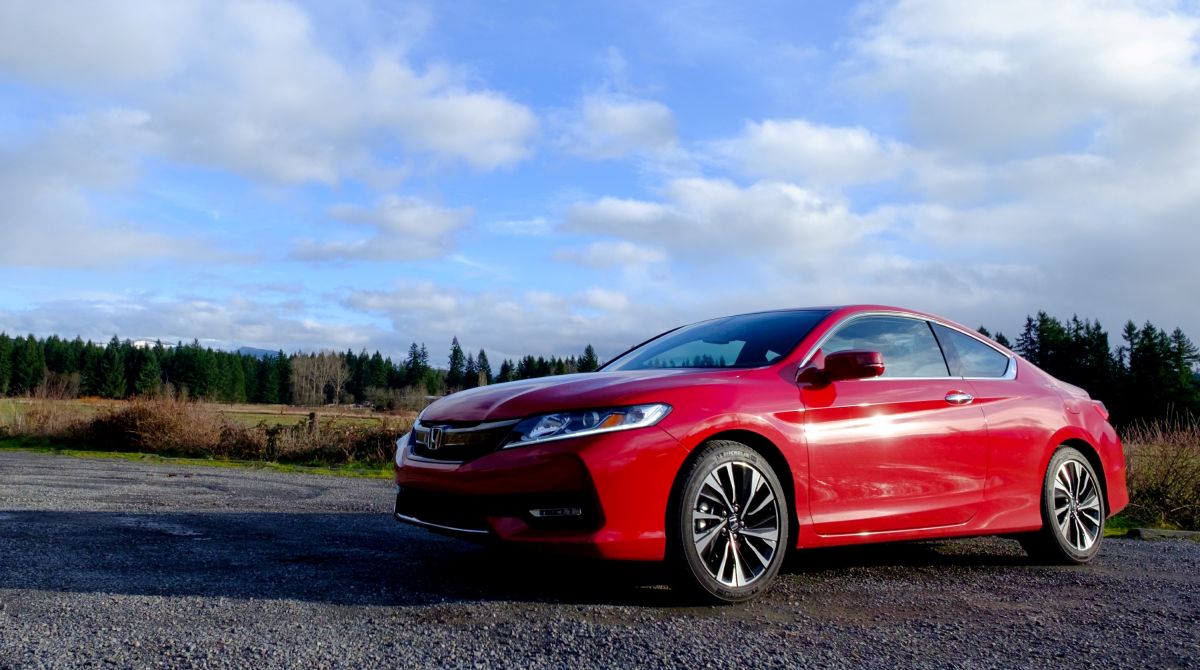
Hyundai
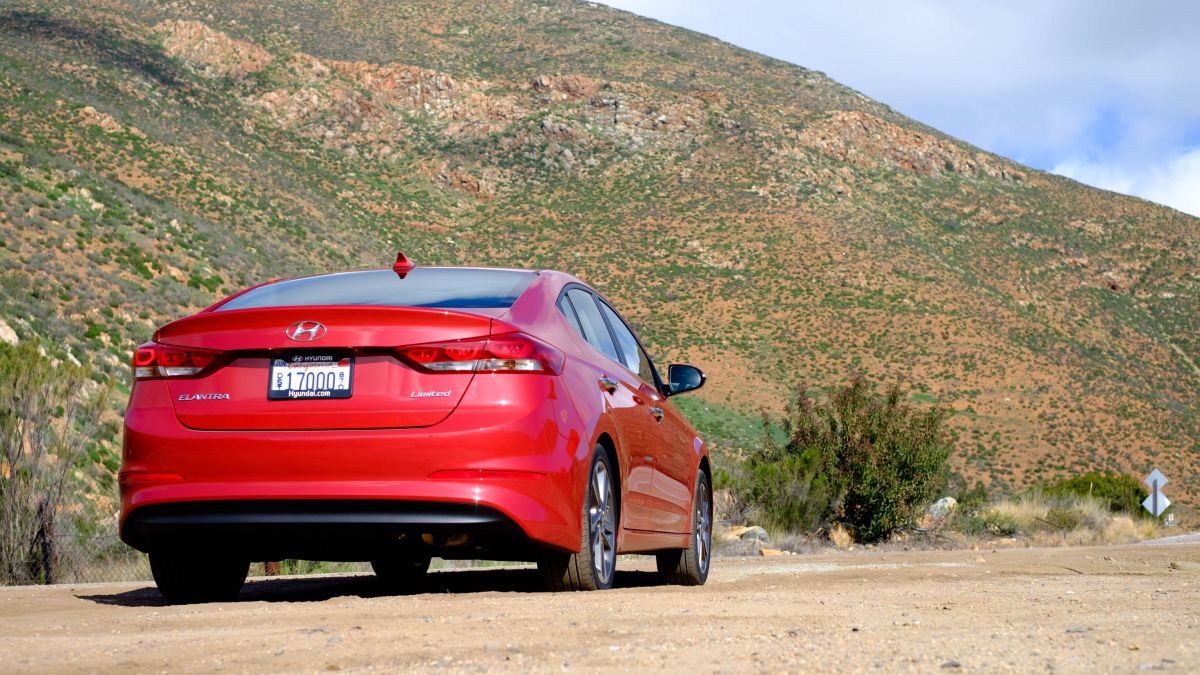
Kia
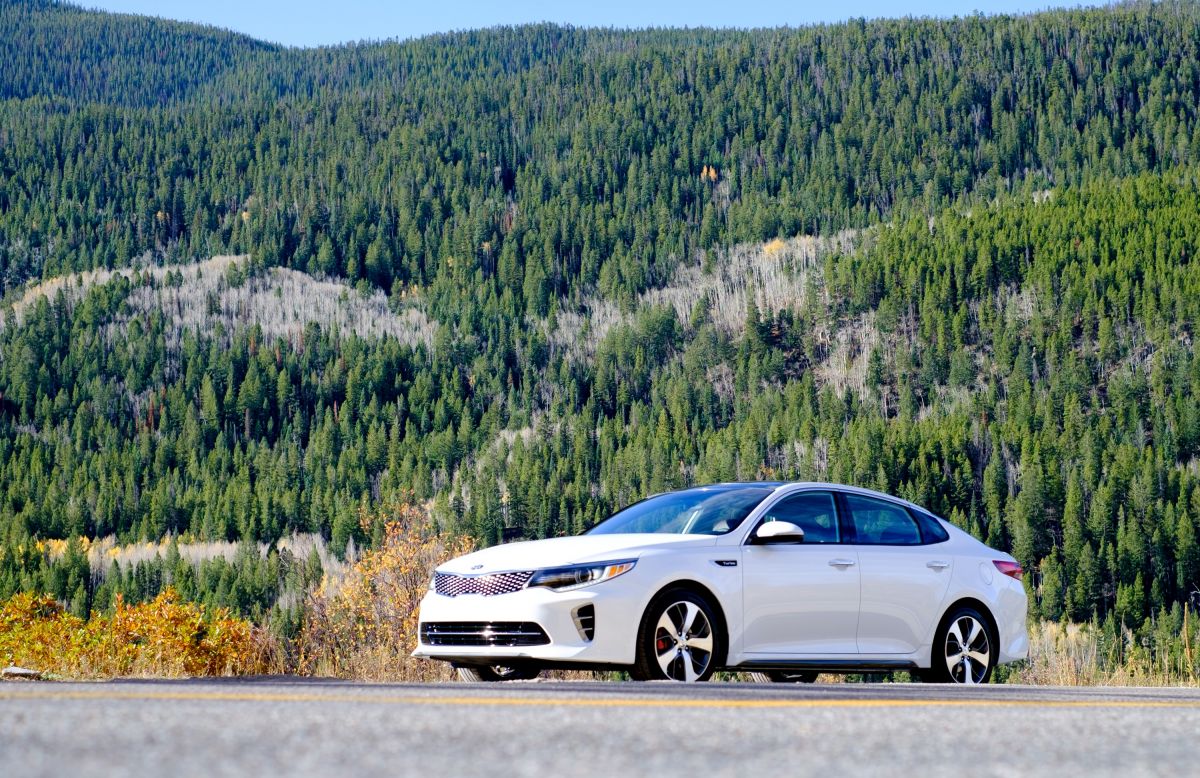
Mitsubishi
- 2017 Mirage
Volkswagen

Source: techradar.com

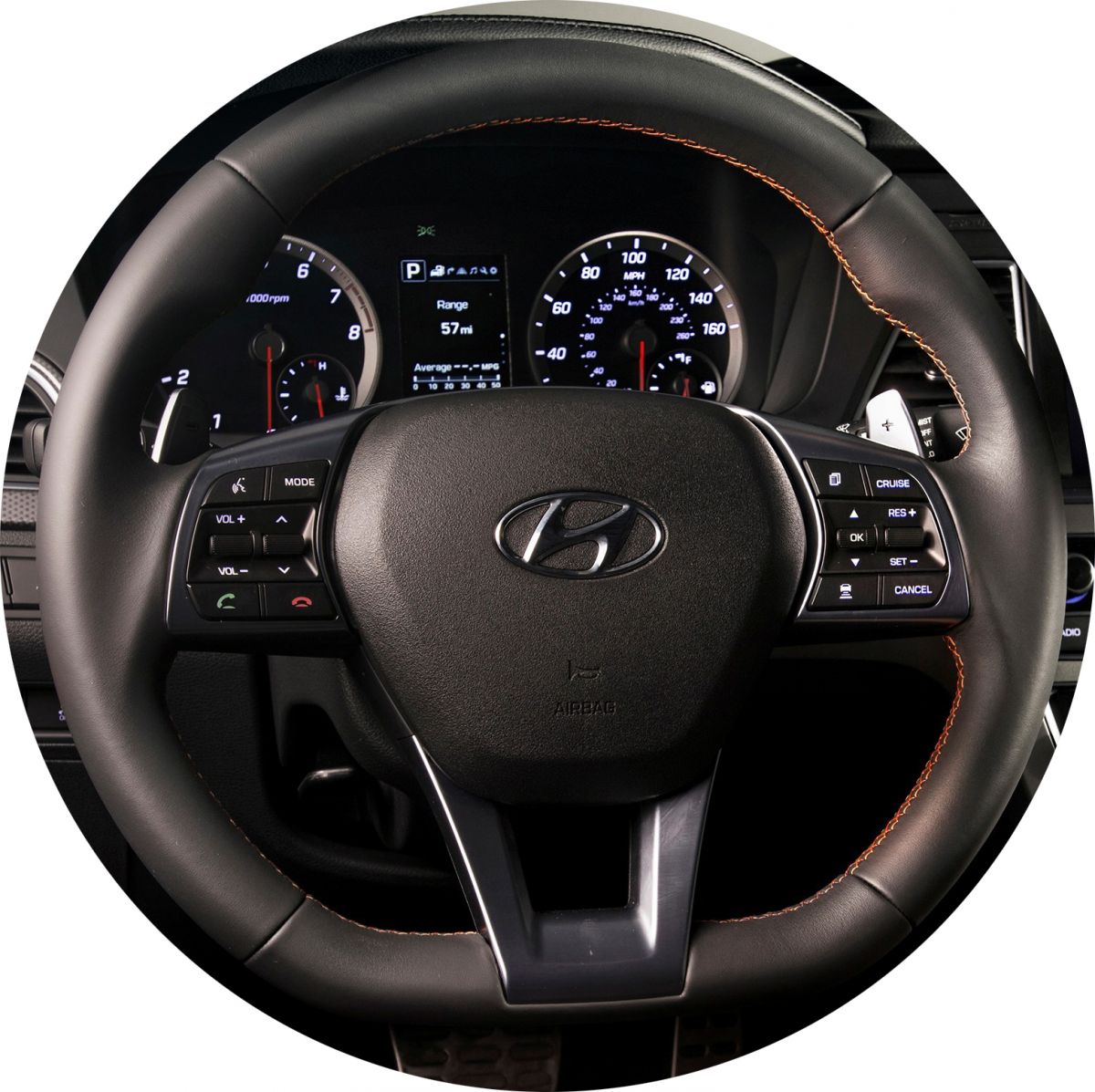






































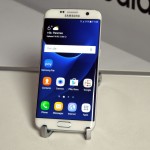

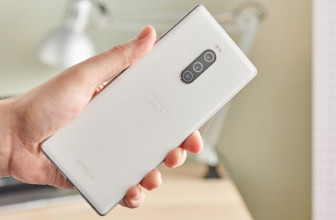
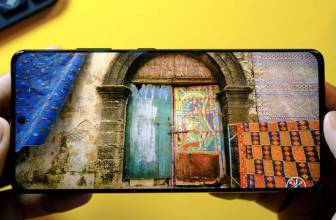
Another big plus for me would be that the voice recognition on Google Now is far more accurate with British accents than Siri, even when driving with music on and background noise I find Google gets it right 99% of the time where as when I have been in cars with people using Siri it takes at least 3 asks to get it right and most end up reverting to text input.
No one knows and only those with something to hide really care. I shall carry on letting Google collect all of the above information because it makes my life easier.
can this be installed on existing Sync units?
I would that this would be easy to install or cheap to install.
Now all we need is a connection continuity without having to worry if data networks are available or not. We will rely more and more on connected technology and will have to stay connected all the time. The next IoT generation devices will have to be network agnostic.
The new A4 2017 also has Android Auto integrated.
I have to say that I'm very happily 'stuck' with Apple Maps.
As for Google Maps on Car Play not sure why you believe that's unlikely given there are 3rd party music, podcasting, and news apps. Maybe you meant Google wouldn't be interested in making a Car Play version?
BTW, do you have any insight into what data (PII or Non-PII) Google is collecting? If so what that data is used for? Is it combined with any other data including syndicated data from third parties? Who is this data shared with? How long is the data retained? Can someone point me to a definitive policy and description that answers the above?
Does Google store my GPS locations? Do they match those with city and location data? Is that data combined with business and personal data of others? Will Google know where I shop, the cubs and organizations I belong to, the friends I have? Where will their data collection end? Does anyone really know? Let's not forget that Google is a data and analytics company that's where it makes the majority of its money not from Android but through Android and I fear shenanigans like this.
I've saved more money using off line satnav such as sygic or OSMAnd than the cost of Google data and the aggravation of the map appearing so slowly that at one point it lagged half a mile. That is before the impossibility of getting anything like a continuous signal. Yes I know I can download maps for a small area for offline use, but navigation needs a signal. I would never buy a car that needed a connection to navigate.